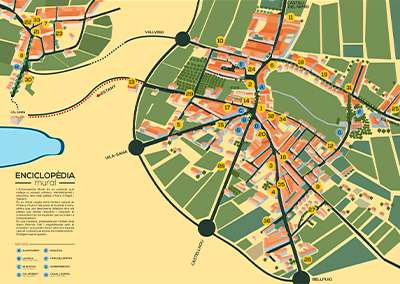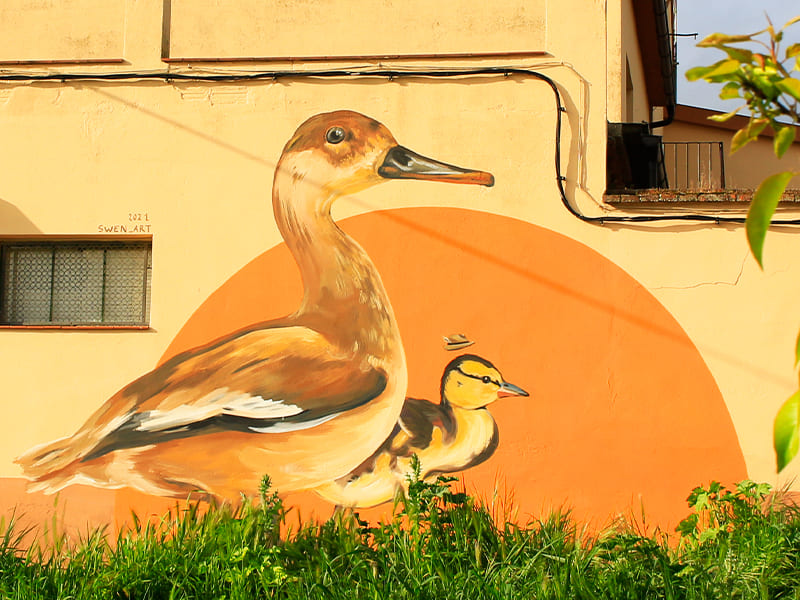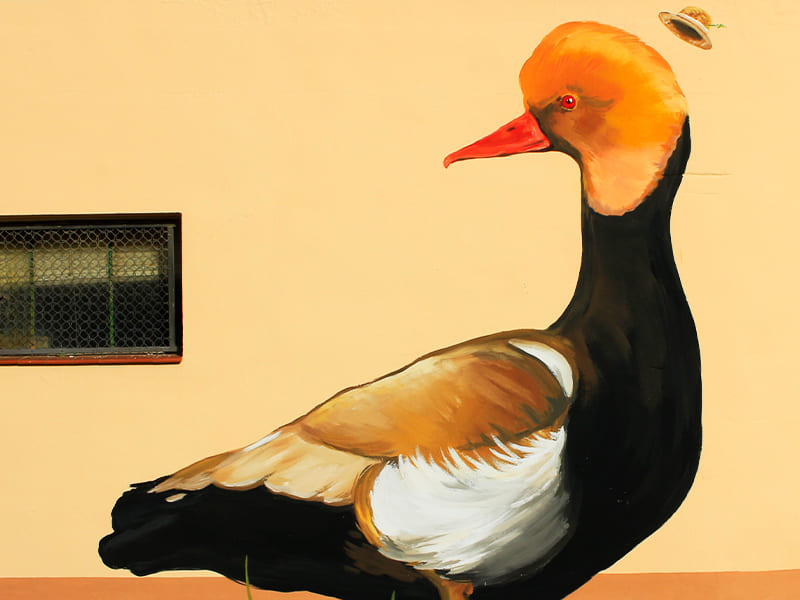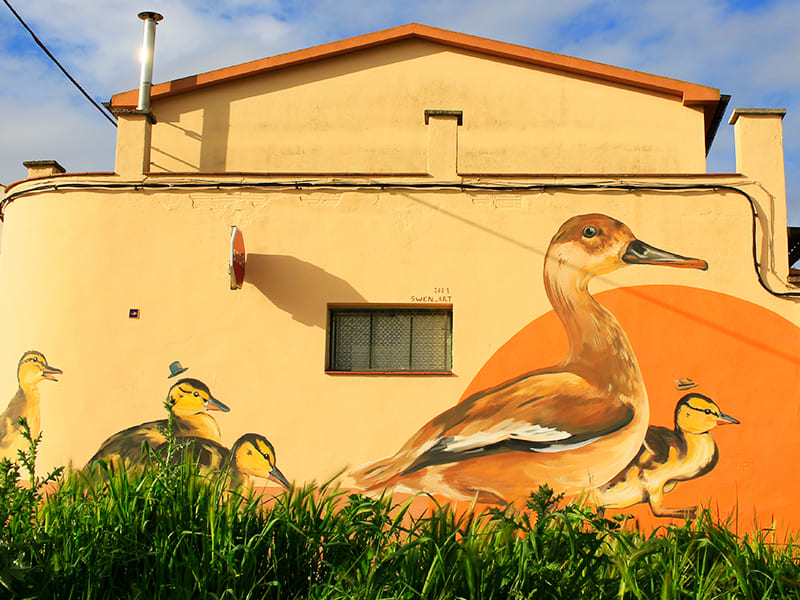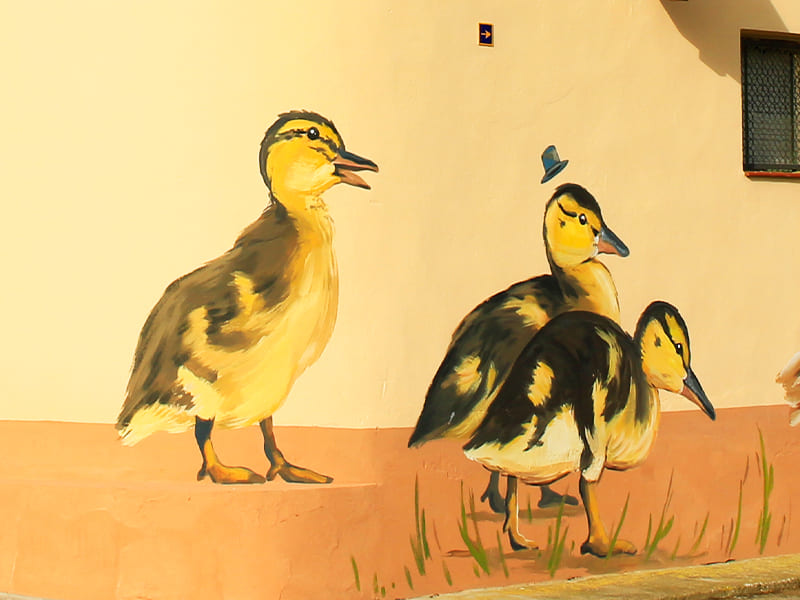53 – 57 cm
Red-Crested Pochard
Netta rufina
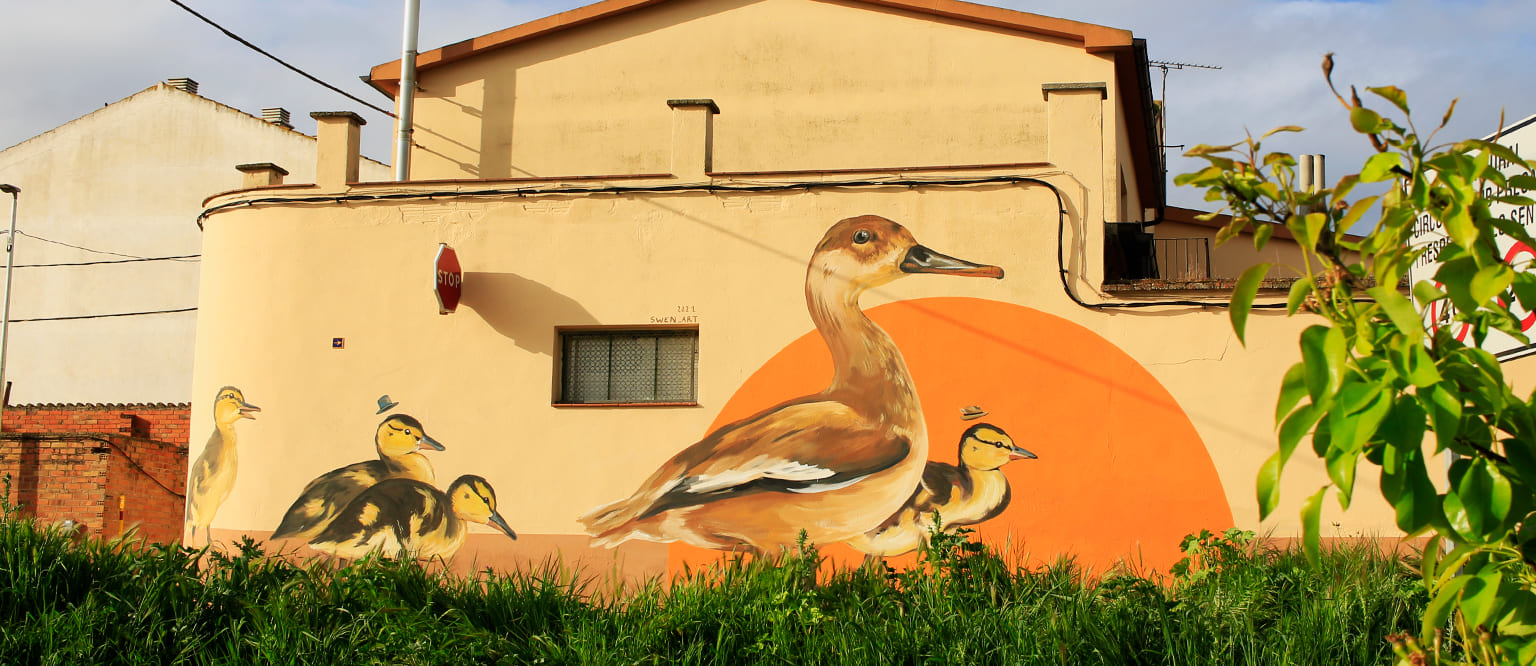
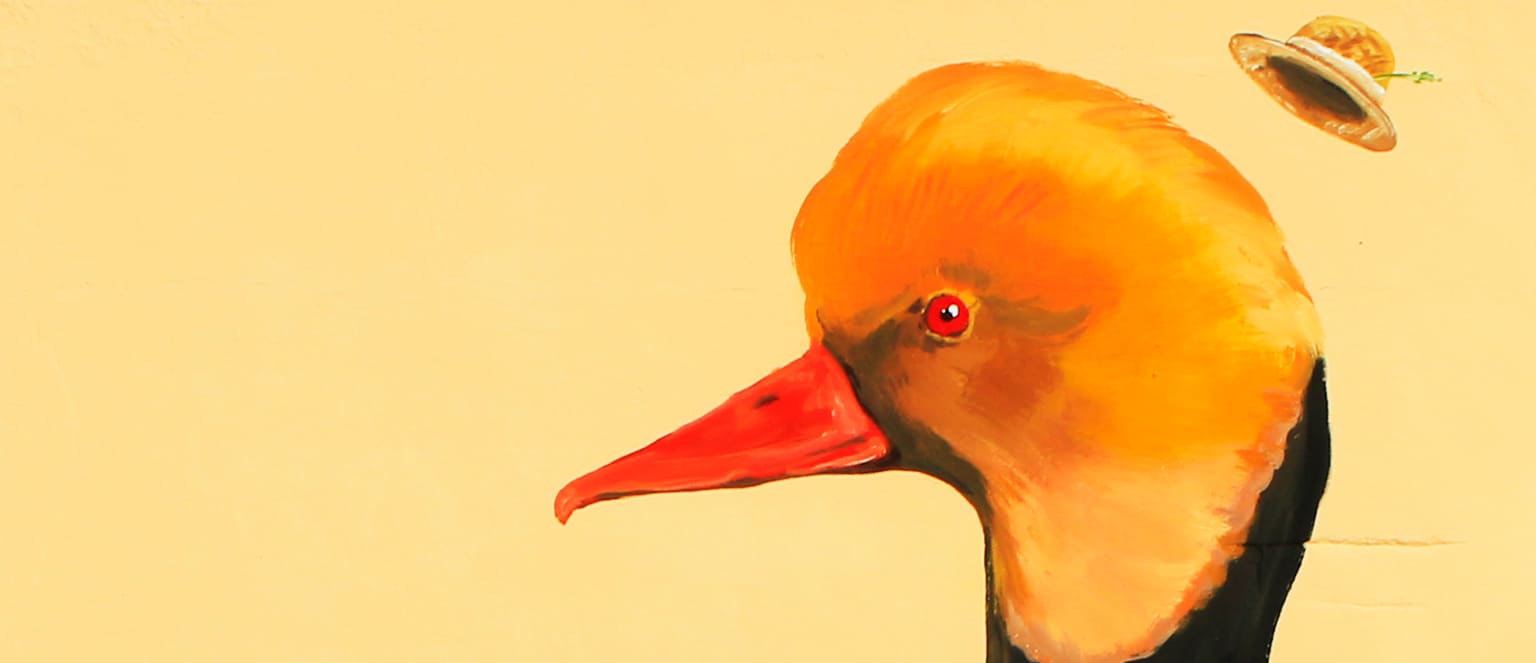



85 – 90 cm

minor concern

in the pond, nearby reservoirs

algae, tadpoles, crustaceans, larvae and small fishes

very common
Especially in ducks, males often have bright and colorful colors over females and offspring, which are more muted. This is due to the fact that males have the function of being seen and noticed, while females must prioritize discrete colors so they are not detected by predators when they are coving the eggs.
This is called sexual dimorphism, and responds to a specific survival strategy of some species, while there are many other birds that both the male and the female are apparently identical.

